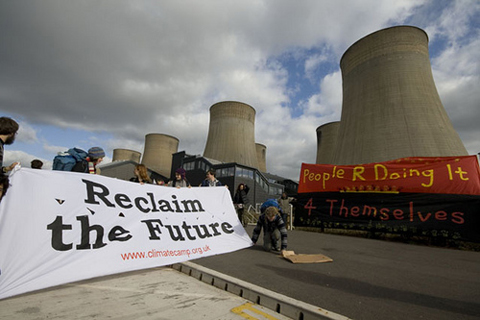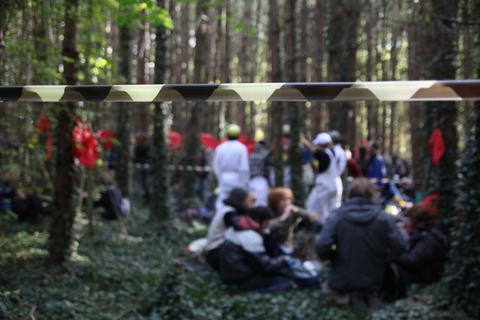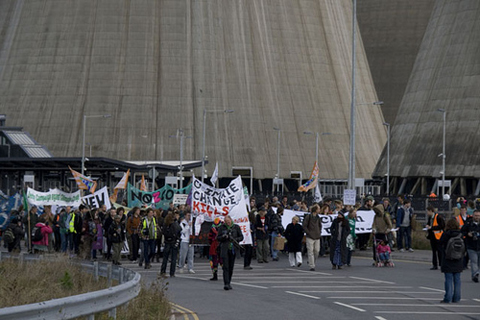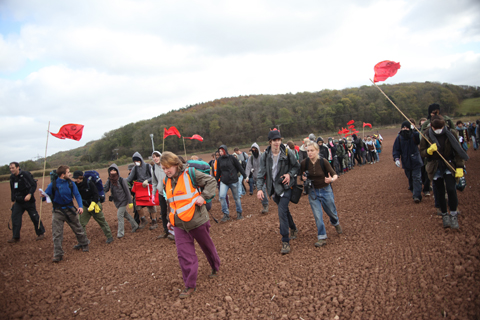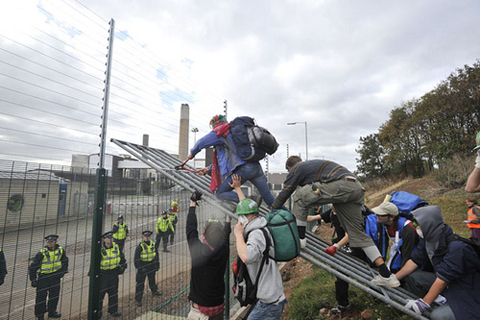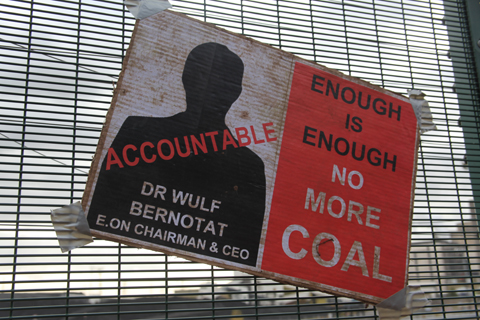The Jerwood Drawing Prize is back again for another year and 2009’s hopefuls won’t disappoint. The longest running annual exhibition has been going since 1994 and is dedicated to promoting and rewarding excellence in contemporary drawing in the United Kingdom.
Spaced over two rooms, more about the first piece I come to is by artist Kate Russo, side effects whose two works sit on top of one another. The first, shop “Dissolving Symmetrically” and the second, “The Key Is Repetition”. Both pieces are done on graph paper, working in the confines of grids. Amongst the mass of verticals and horizontals, Russo has rendered an extremely intricate network of minute coloured squares. Using coloured pencil and graphite she has systematically filled in alternate boxes to eventually build up a repeat pattern that you can only distinguish from a distance. It is clear that time and dedication has been taken to carry through this task she has given herself. It is interesting because the outcome of this drawing was predetermined by the system she chose to follow to colour in the squares. As I look closer the tiny dots almost look as if they’re vibrating, bouncing off one another like molecules in an atom. Or perhaps they even appear to be working ants, busying themselves around a nest. This is quite a satisfying piece of art to study, especially if you have a thing for mathematics, rules or systems.
The work of Catherine Nicholson is quite arresting as my gaze moves over to the next piece. “After The Storm” is in pen and ink on a large canvas. It is the most intrinsically rendered drawing of a collection of apparently decomposing branches, leaves and foliage. On closer inspection you see that Nicholson must have used an extremely fine nibbed pen to achieve the level detail, from the veins of the fern leaves, the cracking of the bark on the branches to the areas where the leaves are starting to decompose. At first this may appear to be a very well executed study of nature but the title makes it take on a new meaning. “After The Storm” makes you think that these are the debris of a natural disaster maybe. Where they all once growing peacefully somewhere in an undisturbed habitat? Perhaps now ripped from their surroundings and discarded in the dirt by the storm.
Another two drawings by Japanese artist, Yumi Shimada are displayed to my far left. One sitting on top of the other, “Self Portrait 2008” is drawn in black ink on paper, showing an unknown formless being in the centre of each frame. The undeterminable origin of this creature, no visible facial features and its forthright position on the page is quite confrontational. The surface is made up of dark, black cross-hatching to give a sense of a thick, dense mass. The first drawing shows it slumped over the length of a small table, almost as if it can longer take it’s own weight. The second is far more disturbing, depicting the creature sending itself through a mangle and turning itself into a black, viscous liquid on the other side. The scene described is actually quite disturbing. It appears that it is performing this act of it’s own will. I am brought to mind the ‘stink-spirit’ character, Okusare, in Spirited Away – a sloth-like, sluggish being. I try to work out the connection between the two pictures. There is perhaps a sense of despair in the first, which may consequently lead to the macabre finality of the second. Shimada says that the portrait shows her squeezing negative thoughts through the mangle, somehow disposing of them. The world that this creature inhabits is not one I recognise. The influence from Japan and the Japanese fantasy genre is apparent. The ominous nature of it and connotations of the dark under-belly of somebody else’s imagination does not make for particularly comfortable viewing. At the same time, I have conflicting feelings that it is strangely compelling. A morbid curiosity to look at something you know will scare you.
The final artwork that I come to is also my favourite. The most reserved of all the pieces on show in size and yet the most monumental in its stature, Samuel Kelly’s “Tokyo Aero-abstraction 7” is quite awe-inspiring. If I had thought the previous drawings had a good eye for detail, it doesn’t compare to this. Drawn on a tiny square of paper, dimensions probably no more than 4cmx5cm, it appears to show an aerial view of a city or road system. Even standing at a normal distance away, it just looks like a grey block of colour. You are invited to stand much, much closer – my face is literally inches from it. Only then can you really see a tiny network of roads and buildings and appreciate its complexity. It is so tiny in fact, that I can only imagine that Kelly would not have been able to draw this with a pencil nib any finer than the point of a pin. I have to say, without delving any deeper into its underlying meaning, it is easily impressive enough as it is. The modest frame seems mammoth in comparison. It allows it so much space, emphasizing even more it’s miniscule proportions. There is something quite impressive about creating work on a microscopic level, like the artist who makes objects to fit on the head of a needle.

There are many more notable examples of drawing on display today, even in a relatively small gallery space; you could spend hours soaking in the extraordinary talent showcased. This is the last week of the exhibition’s run, so head over soon to avoid disappointment.
Last weekend a thousand protestors descended on Ratcliffe-On-Soar power station to protest against the continued use of coal power, see which is one of the biggest sources of carbon emissions.
The weeks leading up had been filled with outreach and preparation with neighbourhoods, thumb groups and individuals working tirelessly towards making the Great Climate Swoop a monumental event.
The action was a huge success for the movement, more about fences were scaled, camps were made, banners dropped, a railway blockaded, and the power station was effectively seiged for 24 hours. With one of the prominent aims to create a social movement, the Climate Camp also showed it is a force to be reckoned with, as hundreds of people were prepared to use direct action and face arrest to make their point.
The weekend didn’t have the best start with the police using preemptive measures to arrest an activist from Leeds and charging him with conspiracy. Plane Stupid were also called and threatened with arrest if they attended the protest, which was a sign that the police were not even prepared to allow people to think about taking meaningful action.
Undaunted, on Friday night and Saturday activists from all over the country arrived at and around Ratcliffe. As the sun rose and the helicopter circled, huddled groups came across each other in woods and the surrounding area. Giving each other a nod and a grin at the impending action, people from the two blocs, ‘Take back the power’ and ‘False Solutions’, then made their way to the muster point.
At the same time, a few miles away, the bloc ‘False Solutions’ was being created with hundreds of protestors, as well as a critical mass of cyclists arriving at Nottingham train station.
At one o’clock everybody, organised, excited and nervous, swooped to the power station. Hundreds of protestors descended from the woods on mass, splitting up at the fences, some tearing, climbing and pulling down the barriers.
A handful of activists even managed to get over several fences and into the power station before they were arrested. With E.ON spending 5 million on new electric fences weeks before, as well as bringing out an injunction to give the police powers to arrest anyone they felt like, it was never going to be an easy task.
A procession with banners, bikes, chants and noise rallied further around and made their voices be heard. Second swoops, rallies, makeshift camps and actions continued throughout the day and the £600,000 police force were kept on their toes whilst using riot gear and letting dogs off their leads to tackle the protestors. Dog bites only added to the range of injuries and concussions inflicted by the police. Medical care was very slow to come, if ever. Apart from the one police injury where a helicopter was quickly scrambled and zoomed off to create a cleverly crafted PR campaign for the London based media sitting in their offices.
A cat and mouse game continued through the evening and into the night, with 300 protestors managing to camp overnight, keeping a vigil on the power station. They were kept in spirits by Veggies who did an amazing job of providing food and drinks to the camp.
The movement is being replicated all over the world, with actions in Australia, that we covered here at Amelia’s Magazine, as well as in Denmark and beyond. Climate camps are being set up all over the world creating grassroots movements essential to combat the rise of climate change by putting pressure on governments and corporations.
The recent back out by E.ON from creating two new coal power stations at Kingsnorth as well as the end to plans for a 3rd runway at Heathrow, which were coincidentally both venues for past Climate Camps, show that we can really make change.
At the weekend activists from around the world also met in Copenhagen to finalise plans for similar actions during the UN climate talks taking place in December. These talks are seen as the stage for social movements worldwide to show a precedent to governments around the world that we need to take action into our own hands. The Camp for Climate Action will be there, so should you.
Categories ,action, ,banner, ,Climate Camp, ,Climate Change, ,coal power, ,Copanhagen, ,Direct Action, ,dog bite, ,E-On, ,False Solutions, ,fences, ,helicopter, ,injury, ,march, ,Pictures, ,police, ,protest, ,Ratclife-On-Soar Power Station, ,Ratcliffe On Soar, ,social movement, ,swoop, ,The Great Climate Swoop
Similar Posts:
- The Great Climate Swoop – the mass action of the year!
- Shutting down Didcot Power Station
- Blackheath Climate Camp 2009
- Climate Camp: Where do we go from here?
- UK Uncut, Green & Black Cross, Black Bloc & the March for the Alternative.



